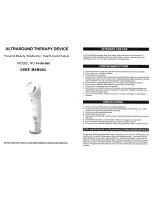
User Manual for Handheld Pulse Oximeter
43
Clinical application of pulse oximeters: SpO
2
is an important
physiological parameter to reflect the respiration and
ventilation function, so SpO
2
monitoring used in clinical
becomes more popularly, such as monitoring the patient with
serious respiratory disease, the patient under anesthesia
during operation, premature and neonate. The status of SpO
2
can be determined in time by measurement and find the
hypoxemia patient earlier, thereby preventing or reducing
accidental death caused by hypoxia effectively.
3 Normal SpO
2
Range and Default Low Limit
In campagna area, healthy people’s SpO
2
value is greater
than 94%, so the values below 94% are determined as
hypoxia. SpO
2
<90% is considered as the default threshold for
determining anoxia by most researchers, so SpO
2
low limit of
the oximeter is set as 90% generally.
4 Factors affecting SpO
2
accuracy (interference reason)
Intravascular dyes such as indocyanine green or
methylene blue
Exposure to excessive illumination, such as surgical
lamps, bilirubin lamps, fluorescent lights, infrared
heating lamps, or direct sunlight.
Vascular dyes or external used color-up product such
as nail enamel or color skin care
Excessive patient movement
Placement of a sensor on an extremity with a blood
pressure cuff, arterial catheter, or intravascular line
Exposure to the chamber with High pressure oxygen
There is an arterial occlusion proximal to the sensor
Blood vessel contraction caused by peripheral vessel











































